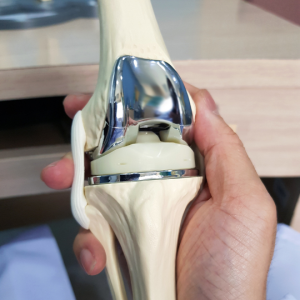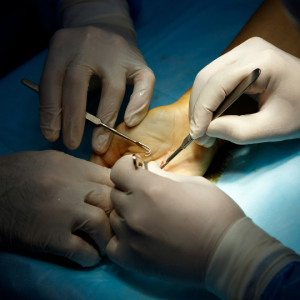- :+91 - 89402 62058, +91 76392 89213
- Agilkarai Street, Tirumayam, Tamil Nadu 622507
Fracture Management
fracture management involves the assessment, stabilization, and treatment of broken bones to promote healing and restore functionality. Initial steps often include immobilization using casts, splints, or braces to minimize movement and support proper alignment. In some cases, surgical interventions such as open reduction and internal fixation may be required for more complex fractures. Pain management and rehabilitation play essential roles in the recovery process, focusing on restoring strength, range of motion, and function. Orthopedic specialists collaborate with patients to create individualized fracture management plans for optimal outcomes.

Joint Replacement Surgery
Joint replacement surgery is a common orthopedic procedure that involves replacing a damaged or arthritic joint with an artificial implant, typically made of metal and plastic. Hip and knee replacements are among the most performed joint replacement surgeries. The surgery aims to relieve pain, improve mobility, and enhance overall joint function. Post-operative rehabilitation, including physical therapy, is crucial for a successful recovery.

Arthroscopic Surgery
Arthroscopic surgery is a minimally invasive orthopedic procedure that involves the insertion of a small camera and specialized instruments through tiny incisions to diagnose and treat joint-related issues. Commonly performed on knees, shoulders, and hips, arthroscopy allows surgeons to visualize and address problems such as torn ligaments, damaged cartilage, or inflammation.

Spinal Surgery
Sports medicine is a specialized field that focuses on the prevention, diagnosis, and treatment of injuries related to sports and physical activity. Sports medicine professionals, including orthopedic surgeons and physiotherapists, work with athletes to optimize performance and recovery.

Hand and Wrist Surgery
Hand and wrist surgery involves procedures to address conditions affecting these intricate structures, such as carpal tunnel syndrome, fractures, or tendon injuries. Common surgeries include carpal tunnel release, fracture fixation, and ligament repairs. Hand and wrist surgeons may utilize minimally invasive techniques for certain procedures, promoting quicker recovery. Post-operative rehabilitation, including hand therapy, is essential for restoring function and mobility. Collaboration with hand surgeons ensures specialized and effective care for individuals with hand and wrist issues.

Foot and Ankle Surgery
Foot and ankle surgery encompasses procedures addressing conditions affecting these vital structures, including fractures, arthritis, or deformities. Common surgeries include bunionectomy for bunion correction, Achilles tendon repair, and ankle arthroscopy for joint issues. Minimally invasive techniques may be employed for certain procedures, aiding in faster recovery. Post-operative care involves rehabilitation and physical therapy to restore mobility and strength.

Orthopedic Trauma Surgery
Orthopedic trauma surgery specializes in the treatment of musculoskeletal injuries resulting from accidents, falls, or other traumatic events. Surgeons in this field address fractures, dislocations, and complex injuries to bones and joints. Immediate intervention may include fracture stabilization, realignment, and soft tissue repair. Advanced imaging technologies aid in accurate diagnosis and planning. Rehabilitation and follow-up care are crucial for optimal recovery, with orthopedic trauma surgeons working closely with patients to restore function and mobility.

Pediatric Orthopedics
Pediatric orthopedics specializes in the diagnosis and treatment of musculoskeletal conditions in children. Pediatric orthopedic surgeons address issues such as congenital deformities, fractures, and developmental disorders impacting bones and joints. Treatment options include non-surgical approaches like bracing and physical therapy, as well as surgical interventions tailored to the unique needs of growing children. Timely intervention is essential for supporting normal musculoskeletal development in pediatric patients.

Orthopedic Oncology
Orthopedic oncology is a specialized branch of medicine that focuses on the diagnosis and treatment of tumors affecting the musculoskeletal system, including bones and soft tissues. Orthopedic oncologists employ a multidisciplinary approach, collaborating with surgeons, oncologists, and other specialists to provide comprehensive care for patients with bone and soft tissue tumors.

